Today’s Current Affairs: 6th November 2024 for UPSC IAS exams, State PSC exams, SSC CGL, State SSC, RRB, Railways, Banking Exam & IBPS, etc
Table of Contents
Yanadi Tribe : In News

Three children of the Yanadi tribe who went missing from their homes at Kalekhanpeta in Machilipatnam, Andhra Pradesh, were traced recently.
- Yanadis are one of the major scheduled tribes of Andhra Pradesh.
- They are among the most vulnerable tribal groups in India.
- They live in extreme conditions of poverty and social exclusion.
- A significant population of Yanadis live in the plains of Nellore, a district in the eastern coastal state of Andhra Pradesh.
- Their population according to 2001 census reports is 4,62,167 in Andhra Pradesh.
- Their mother tongue is Telugu.
- The Yanadis have been associated with occupations such as hunting, gathering, and agriculture, relying on their intimate knowledge of the land and its resources for sustenance.
- They have rich traditional health knowledge, including knowledge for everyday healthcare and specialized knowledge (e.g., snakebite cures).
- They harness the medicinal potential of plants for treating gastrointestinal disorders, respiratory ailments, skin conditions, and reproductive health issues.
- Yanadis have many religious beliefs and festivals connected with the forest flora.
- It is a dance performed by the Yanadi tribe during festivals and special occasions.
Kalka-Shimla Railway : In News

Himachal Pradesh Chief Minister recently urged the Central government to explore the possibility of running trains on the Kalka-Shimla narrow-gauge railway, a UNESCO world heritage site, on green hydrogen.
- It is a narrow-gauge railway in North India which traverses a mostly mountainous route from Kalka (Haryana) to Shimla (Himachal Pradesh).
- The railway was built in 1898 to connect Shimla, the summer capital of British India, with the rest of the Indian rail system.
- The project’s chief engineer was S. Harington.
- The 96 km. long, single-track line, often called the toy train line, was opened in 1903.
- It passes through 18 stations, 102 tunnels, and over 850 bridges.
- Total change of altitude: From Kalka (655 meters) to Shimla (2,076 meters).
- The world’s highest multi-arch gallery bridge at Kanoh and the world’s longest tunnel at Barog (at the time of construction) of the KSR were the testimony of the brilliant engineering skills applied to make this railway line.
- It was a UNESCO World Heritage Site in 2008.
- The rail network holds the Guinness Book of World Records for its 96-kilometers steepest rise in altitude with a crossover of 800 bridges and viaducts.
Central Water Commission: Study

Glacial lakes and other water bodies across the Himalayan region saw a 10.81% increase in area from 2011 to 2024 due to climate change, signalling a heightened risk of Glacial Lake Outburst Floods (GLOFs), according to a Central Water Commission’s (CWC) report.
- It is a premier technical organization of India in the field of water resources.
- It is presently functioning as an attached office of the Ministry of Jal Shakti, Department of Water Resources, River Development, and Ganga Rejuvenation, Government of India.
- Headquarters: New Delhi
- The Commission is entrusted with the general responsibilities of initiating, coordinating, and furthering, in consultation with the State Governments concerned, schemes for control, conservation, and utilization of water resources throughout the country for purposes of Flood Control, Irrigation, Navigation, Drinking Water Supply, and Water Power Development.
- It also undertakes the investigations, construction and execution of any such schemes as required.
- It is headed by a chairman, with the status of Ex-Officio Secretary to the Government of India.
- The work of the Commission is divided among 3 wings, namely,
- Designs and Research (D&R) Wing
- River Management (RM) Wing
- Water Planning and Projects (WP&P) Wing.
- Each wing is placed under the charge of a full-time member with the status of Ex-Officio Additional Secretary to the Government of India.
- Each wing, comprising a number of organisations, is responsible for the disposal of tasks and duties falling within the scope of functions assigned to them.
- The National Water Academy, located in Pune, is responsible for training of central and state in-service engineers and it functions directly under the guidance of the Chairman.
Water Sports Activities At Gobind Sagar Lake:

Himachal Chief Minister recently inaugurated water sports activities at Gobind Sagar Lake.
- It is a manmade reservoir located in the Una and Bilaspur districts of Himachal Pradesh.
- It is named in honour of Guru Gobind Singh, the tenth Sikh Guru.
- Its source is the Bhakra Dam on the Sutlej River.
- One of the world’s highest gravity dams, the Bhakra Dam is perched at an elevation of 225.5 m above its lowest foundations.
- Gobind Sagar reservoir is 90 km. long and encompasses an area of approximately 170 sq. km.
- The maximum and mean depths of the reservoir are 163.07 m and 55 m, respectively, making it one of the deepest man-made lakes in the world.
- It is surrounded by lush green hills and the snow-capped peaks of the Himalayas.
- It is also the third-largest in the country concerning the storage of water.
- It helps in supplying water for irrigation to the states of Himachal Pradesh, Punjab, Haryana, and Rajasthan, significantly benefiting agriculture in the region.
LignoSat : Launched Into Space

The world’s first wooden satellite LignoSat built by Japanese researchers was launched into space in an early test of using timber in lunar and Mars exploration.
- LignoSat”, a fusion of “ligno” (the Latin word for wood) and “satellite”.
- It is developed through collaborative research and development by a team comprising members from Kyoto University and Sumitomo Forestry Co.
- Their objective is to leverage the eco-friendliness and cost-effectiveness of wood in space exploration.
- It is tasked to demonstrate the cosmic potential of renewable material as humans explore living in space.
- It is constructed from magnolia wood, chosen for its durability and adaptability.
- It will first be sent to the International Space Station (ISS) aboard a SpaceX rocket from the Kennedy Space Center.
- Once it reaches the ISS, it will be released from the Japanese experiment module to test its durability and strength.
- Researchers will receive data from the satellite to monitor its performance, including signs of strain and its ability to withstand extreme temperature changes.
- Wooden satellites are viewed as more environmentally friendly upon reentering the Earth’s atmosphere after their mission.
- Unlike metal satellites, which pose air pollution risks due to the generation of metal particles during reentry, wooden satellites mitigate these concerns.
Who Was Ralengnao Bob Khathing?
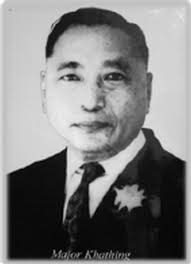
Defence Minister inaugurated the Major Ralengnao ‘Bob’ Khathing Museum of Valour at Tawang in Arunachal Pradesh.
- Ranenglao ‘Bob’ Khathing was born on February 28, 1912, in Manipur’s Ukhrul district.
- He was a Tangkhul Naga.
- During World War II he became the first Manipuri to get the King’s Commission.
- He was given the coveted award of Member of British Empire (MBE) for his role in galvanising Naga support against the Japanese in Burma and India and also the Military Cross (MC) for his acts of bravery above and beyond the call of duty.
- Bob was commissioned into the 9/11 Hyderabad Regiment (now Kumaon Regiment). In 1942, he was transferred to the Assam Regiment in Shillong.
- During the Second World War, he was part of a guerrilla outfit called Victor Force, raised by the British to combat the Japanese on the Burma-India road.
- He was appointed as advisor to a force known as SANCOL, comprising 153 Gurkha Parachute Battalion which was formed in June 1944 under the command of Major John Saunders, to this force.
- He led the expedition to peacefully integrate Tawang into India.
- He was also instrumental in establishing essential military and security frameworks, such as the Sashastra Seema Bal, Nagaland Armed Police, and the Naga Regiment.
- He was the first person of tribal origin to serve as an ambassador for India in then Burma, now Myanmar.
What Are Orphan Drugs?
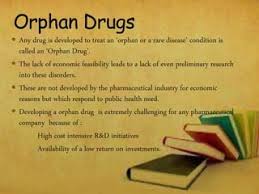
India faces significant challenges in ensuring the development, affordability, and accessibility of orphan drugs, especially compared to other countries like the United States and the European Union.
- Orphan drugs are pharmaceutical agents developed specifically to treat rare (orphan) diseases
- These diseases, though affecting only a small portion of the population, often lead to life-threatening or chronically debilitating conditions. Definitions of orphan drugs vary depending on the regulatory framework.
- There is no formal prevalence-based definition in India, the NPRD of 2021 outlines a framework for diagnosing and treating rare diseases, with a low prevalence threshold expected.
- Orphan drugs are categorised based on the types of diseases they target and their regulatory status.
- Diseases such as genetic disorders, rare cancers, metabolic disorders, and autoimmune conditions frequently fall under the orphan disease category.
- Genetic disorders include conditions like cystic fibrosis and Duchenne muscular dystrophy.
- Rare cancers like neuroblastoma and gliomas also qualify for orphan drug development.
- Metabolic disorders, such as Gaucher’s disease and Fabry disease, and autoimmune diseases, like systemic sclerosis, also benefit from orphan drugs.
- For a drug to receive orphan drug designation, it must meet certain criteria that vary across countries.
- Typically, the disease in question must have a low prevalence, the condition must lack approved treatments, or the orphan drug must provide significant benefits over current treatment options.
- Developers of orphan drugs must also provide scientific evidence that the drug has the potential to treat or alleviate the condition.
- This evidence can be presented at any stage of drug development, from preclinical research to late-phase clinical trials.
- Once designated, orphan drugs receive several incentives to encourage their development, including market exclusivity, tax credits for research and development (R&D) expenses and fee waivers for regulatory applications.
Mount Lewotobi Laki-Laki : Erupted
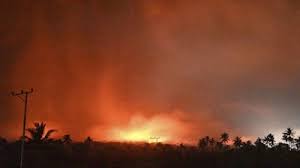
At least 10 people died after Mount Lewotobi Laki-laki in eastern Indonesia erupted and forced authorities to evacuate several nearby villages.
- Mount Lewotobi Laki-Laki is located on Flores Island.
- It is a volcanic mountain situated in East Nusa Tenggara province of
- The volcano is part of a twin-volcano system that the local residents perceive as male and female mountains.
- The ongoing volcanic eruption has occurred at the male counterpart of the system (Lewotobi Lakilaki) while the female mountain is known as Lewotobi Perempuan.
- The two mountains are classified as stratovolcanoes which are the most commonly occurring volcanoes around the world and are formed by the layers of lava that repeatedly oozes out of the crater.
- It is not uncommon for Indonesia to witness such volcanic eruptions as it is situated along the famous ‘Ring of Fire’ in the Pacific region- an encirclement dotted by active volcanoes that sit on top of vigorous tectonic plates that often collide and lead to seismic activity causing earthquakes and tsunamis.
- Stratovolcanoes is a tall, steep, and cone-shaped type of volcano.
- Unlike flat shield volcanoes, they have higher peaks.
- They are typically found above subduction zones, and they are often part of large volcanically active regions, such as the Ring of Fire that frames much of the Pacific Ocean.
- Strato Volcanoes comprise the largest percentage(~60%) of the Earth’s individual volcanoes, and most are characterized by eruptions of andesite and dacite, lavas that are cooler and more viscous than basalt.
Foam in Yamuna River:
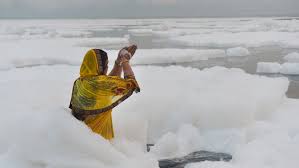
In preparation for Chhath Pooja, Delhi has faced recurring debates and actions around the toxic foam in the Yamuna River, where devotees gather for rituals.
- The river’s lean flow during winter time reduces the natural dilution of pollutants, allowing them to concentrate.
- The main contributors to foaming are phosphates from detergents used in domestic and industrial activities. These chemicals lead to surfactant buildup in the water.
- Discharge from industries upstream also contributes chemicals that create foam.
- Anaerobic bacteria act on the pollutants, especially as water falls from heights, such as at the Okhla barrage, aiding foam formation.
- The onset of winter reduces oxygenation, aggravating the foaming.
First Asian Buddhist Summit : India To Host
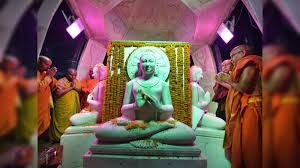
India is set to host the first Asian Buddhist Summit (ABS) in New Delhi on November 5-6, 2024, organized by the Ministry of Culture in collaboration with the International Buddhist Confederation (IBC).
- Initiated by the Government of India and IBC to promote Buddhist heritage and interfaith dialogue across Asia for the first time.
- Ministry: Organized by the Ministry of Culture, Government of India.
- Location: Bharat Mandapam, New Delhi, India.
- 2024 theme: “Role of Buddha Dhamma in Strengthening Asia.”
- Aim is to celebrate the cultural and spiritual heritage of Buddhism in Asia, fostering dialogue and collaboration on challenges faced by the Buddhist community.
IUCN’s First Global Tree Assessment:
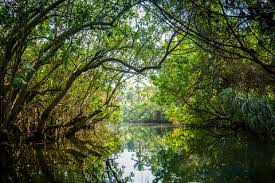
The first Global Tree Assessment was published as part of an update to the IUCN Red List of Threatened Species, with its findings announced at the Convention on Biological Diversity (CBD COP16) in Cali, Colombia.
- It aims to evaluate all tree species globally for inclusion in the IUCN Red List, improving conservation information for decision-making.
- Started in 2015, the GTA helps prioritise conservation action, research, and funding for species most at risk of extinction.
- It collaborates with over 60 botanical organisations, 25 IUCN groups, and numerous tree experts worldwide.
Key Findings of the Report:
- Of the 47,282 tree species analysed, 16,425 are threatened with extinction. Iconic species, such as magnolias, oaks, maples, and ebonies, are among those most endangered.
- Threatened tree species exceed the combined total of threatened birds, mammals, reptiles, and amphibians, with trees at risk in 192 countries.
- The South Western Ghats of Kerala host Buchanania barberi, a small tree classified as Critically Endangered on the IUCN Red List since 2018.
- Urgent conservation initiatives, including germination trials that revealed high seed viability, have been undertaken to save this species.
- Land clearing for crops and livestock production is a leading driver of tree extinction, especially in tropical and forest-rich regions like South America.
- Many tree species are exploited for timber and other forest products, putting additional pressure on natural populations.
- Over 5,000 tree species are used for timber, and more than 2,000 for food, medicine, and fuel.
- Invasive Species, Pests, and Diseases: Non-native species and pathogens are increasingly affecting tree health, particularly in temperate zones.
- Warming temperatures, rising sea levels, and more frequent and intense storms pose significant risks, especially in tropical and island ecosystems.
- Initiatives in regions such as the Juan Fernández Islands, Cuba, Madagascar, and Fiji have successfully protected endangered tree species.
- Countries like Ghana, Colombia, Chile, and Kenya have developed national strategies focused on tree conservation.
- Gabon has designated key conservation areas specifically for trees, demonstrating a proactive approach to biodiversity preservation.
Centralised Asset Liquidation Auction Platform:
The Insolvency and Bankruptcy Board of India (IBBI) and Indian Banks’ Association (IBA) plans to create a centralised platform for auctioning of assets under the Insolvency and Bankruptcy Code (IBC).Auction of assets will be conducted via the eBKray platform which has been operating auctions for mortgaged assets under the SARFAESI Act, 2002 for the past five years.
Diffraction Limit:
The resolution limit of an optical instrument that uses light is constrained by the diffraction limit, a fundamental boundary that prevents improvement beyond a certain point.This diffraction limit affects the instrument’s ability to distinguish between two close objects. Due to the diffraction limit, scientists could use the light microscope to see cells but not the proteins inside them or a virus attacking them. However, optical microscopes can see inside cells and even things as small as atoms. This technique is called super-resolution microscopy, and it is not bound by the diffraction limit.
‘Quota-Within-Quota’ System:
Supreme Court ruling, have questioned whether a ‘quota-within-quota’ system is needed to ensure that affirmative action policies are more equitable across SC subgroups.Existing Reservation Quotas:Scheduled Castes (SC): 15% reservation in education and public employment.Scheduled Tribes (ST): 7.5% reservation.Other Backward Classes (OBC): 27% reservation with a “creamy layer” exclusion.Economically Weaker Sections (EWS): 10% reservation without caste restrictions.
Visible Emission Line Coronagraph:
Scientists from the Indian Institute of Astrophysics (IIA) in Bengaluru have reported initial significant observations from the Visible Emission Line Coronagraph (VELC) onboard ADITYA-L1, India’s first solar mission launched by ISRO.The VELC on ADITYA-L1 successfully captured and precisely estimated the onset time of a Coronal Mass Ejection (CME) that erupted from the Sun on July 16, marking the first scientific result from India’s solar mission.The VELC’s unique capabilities allowed scientists to observe the CME close to the Sun’s surface, a breakthrough as such observations are typically visible only at a greater distance from the Sun.
Legendary Folk Singer Sharda Sinha Passes Away at 72:
Legendary folk singer, Sharda Sinha, known fondly as the “Bihar Kokila” (Nightingale of Bihar) has passed away at age 72 due to complications from cancer. Sinha’s voice brought joy and pride to countless people, especially those who celebrated the traditional festivals of Bihar. Her songs, full of warmth and authenticity, made her a beloved figure in Indian folk music.
ISRO to Launch EU’s Proba-3 Satellite:
Indian Space Research Organisation (ISRO) is set to launch the European Union’s Proba-3 Solar Observation Mission in December from Sriharikota. The satellite, arriving at Sriharikota, is designed to study the Sun’s faint corona, a crucial aspect of solar science. This marks India’s third collaboration with the EU in space, following the earlier launches of Proba-1 and Proba-2.
32nd Kendriya Hindi Samiti Meeting in New Delhi:
Union Home Minister and Minister of Cooperation, Shri Amit Shah, chaired the 32nd meeting of the ‘Kendriya Hindi Samiti’ in New Delhi. The Kendriya Hindi Samiti is the apex body responsible for providing guidelines for the development and promotion of the Hindi language across the country.
WBF World Championship Title 2024:
Indian professional boxer Mandeep Jangra claimed the World Boxing Federation’s super featherweight world title after defeating Britain’s Conor McIntosh in an intense match in the Cayman Islands. The 31-year-old, who trains under former Olympic silver medallist Roy Jones Jr, dominated most rounds and secured a significant victory, marking only one defeat in his professional career so far.
Indian Navy Hosts 3rd Mahasagar Summit:
The Indian Navy successfully conducted the third edition of the Mahasagar summit, continuing its flagship outreach initiative for maritime security in the Indian Ocean Region (IOR). Held virtually under the theme, “Training Cooperation to Mitigate Common Maritime Security Challenges in the IOR,” the summit brought together senior leaders from 10 countries to discuss collaborative efforts to tackle shared maritime threats.
Bid to host the 2036 Summer Olympics : India
India has officially submitted a Letter of Intent to the International Olympic Committee (IOC) for the 2036 Olympic and Paralympic Games, marking a significant step in realizing Prime Minister Narendra Modi’s vision of hosting the prestigious event. The bid was submitted by the Indian Olympic Association (IOA) on October 1, 2023, as part of the ongoing effort to elevate India’s global sporting profile. This would be the first time India hosts the Olympics, fulfilling a dream long cherished by its citizens.
IREL (India) Limited and Kazakhstan’s UKTMP have formed a joint venture:
Indo-Kazakh collaboration, IREL (India) Limited, a CPSU under the Department of Atomic Energy (DAE), and Kazakhstan’s Ust-Kamenogorsk Titanium and Magnesium Plant JSC (UKTMP JSC) have inked a joint venture agreement to establish IREUK Titanium Limited, aimed at producing titanium slag in Odisha, India.
IDFC FIRST Bank Launches Real-Time International Money Transfer Tracking:
IDFC FIRST Bank, in partnership with Swift, has introduced a groundbreaking real-time tracking service for international money transfers. Available on its award-winning mobile app and internet banking platforms, this service positions IDFC FIRST Bank as the first Indian bank to offer end-to-end traceability for cross-border payments. This service aligns with the bank’s “Customer First” philosophy, aimed at bringing the transparency and speed of UPI and IMPS digital payments to international transactions.
International Day for the Prevention of Exploitation of the Environment in War and Armed Conflict:
The United Nations observes the International Day for the Prevention of Exploitation of the Environment in War and Armed Conflict each year on November 6 to raise awareness and encourage global efforts to protect the environment in times of conflict. This day sheds light on the often-overlooked environmental impacts of armed conflict and underscores the importance of environmental protection as part of peacebuilding efforts.
Union Minister Dr. Virendra Kumar Launches ‘Shilp Samagam Mela 2024’ and Unveils ‘TULIP’ Platform:
The Union Ministry of Social Justice and Empowerment inaugurated the ‘Shilp Samagam Mela 2024’ with a grand opening at Dilli Haat, New Delhi. Organized by key Corporations under the Ministry, including the National Scheduled Castes Finance and Development Corporation (NSFDC), National Backward Classes Finance and Development Corporation (NBCDFC), and National Safai Karmachari Finance and Development Corporation (NSKFDC). The mela aims to empower marginalized artisans by providing a marketplace for their crafts and products, encouraging economic inclusion and cultural promotion.
Royal Enfield Launches EV Brand “Flying Flea”:
Royal Enfield has recently unveiled its highly anticipated electric vehicle (EV) brand, “Flying Flea”, an homage to one of the brand’s most iconic models. The original Flying Flea was a compact, lightweight motorcycle designed in the 1940s for military use during World War II. Engineered to be air-dropped behind enemy lines, the bike was valued for its nimble handling and ability to navigate rugged terrains. Its unique design and military legacy eventually paved the way for a civilian model that remains popular among enthusiasts today.




